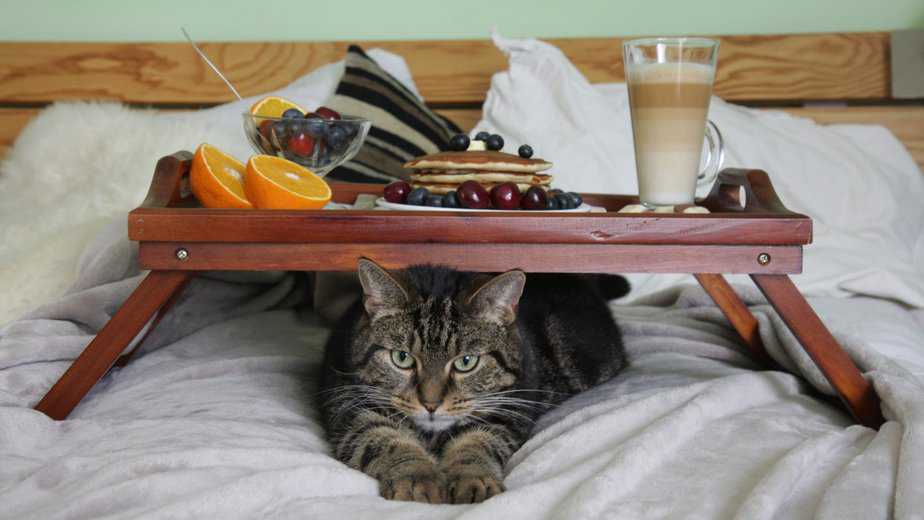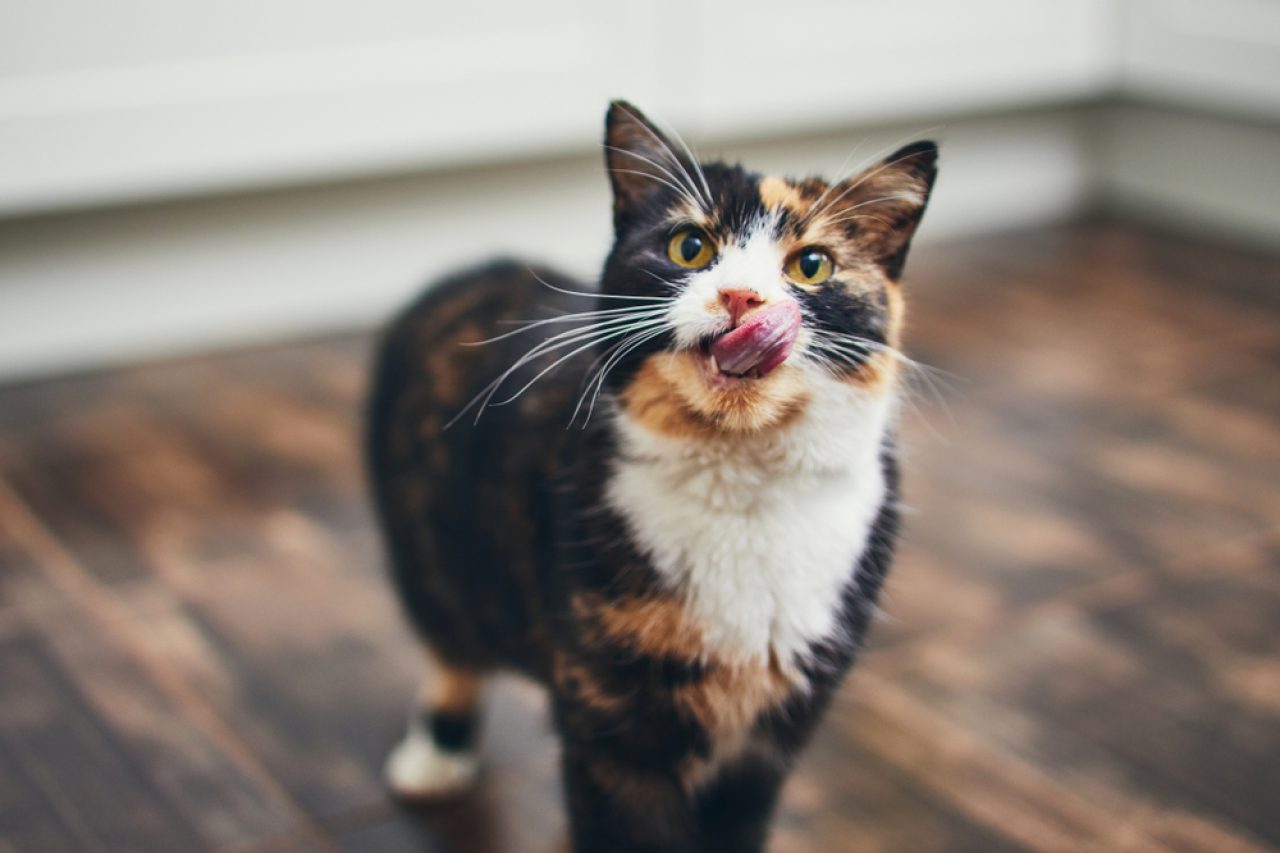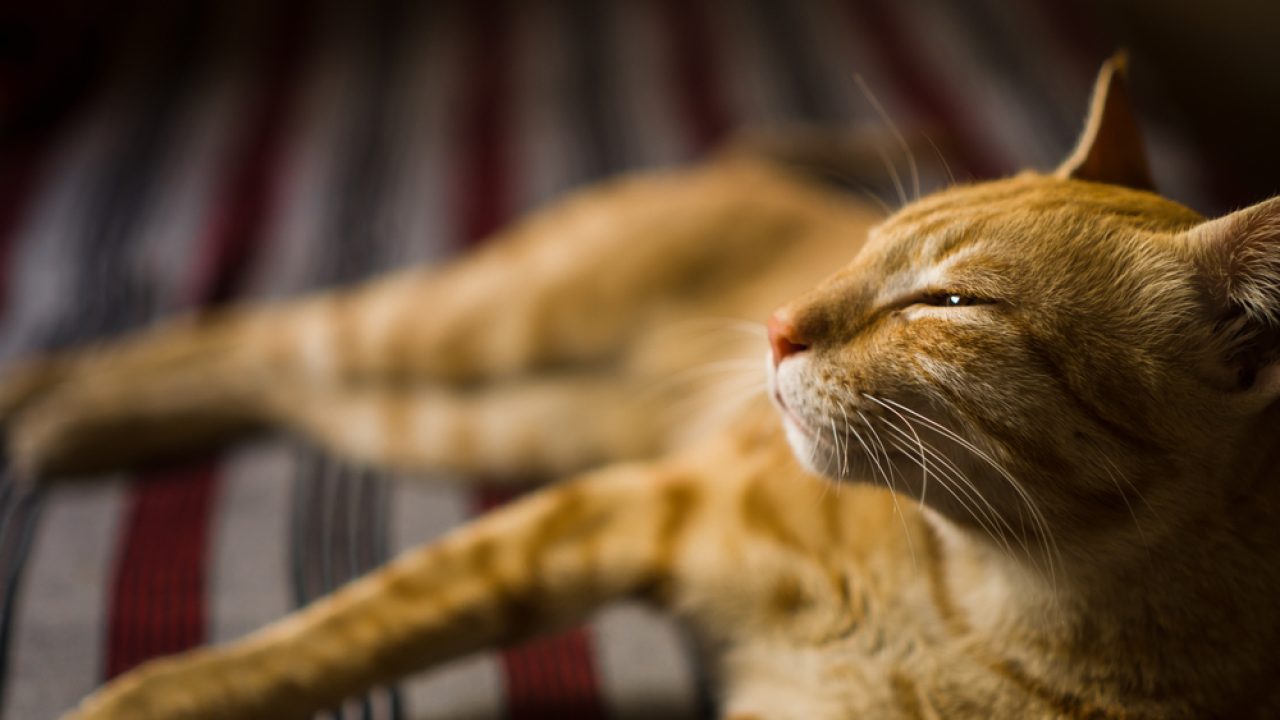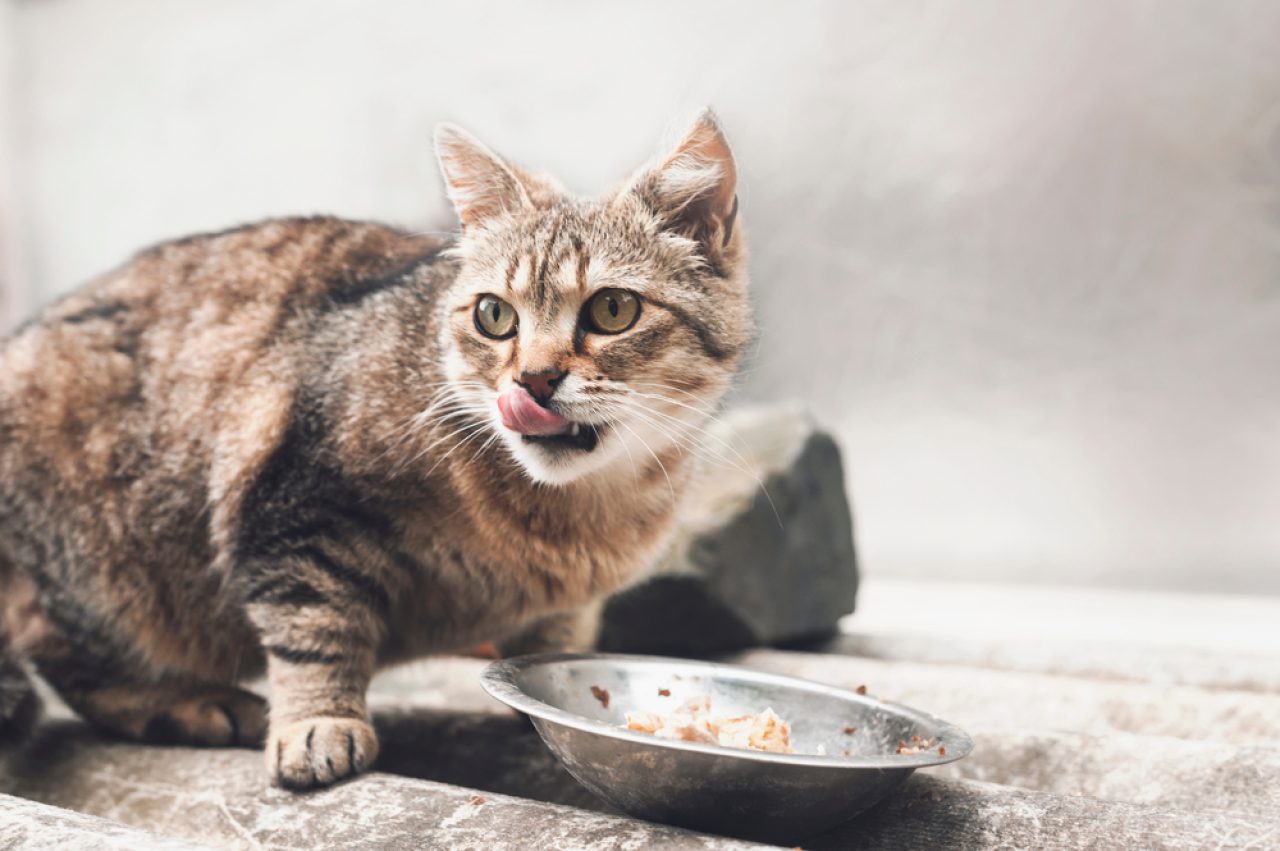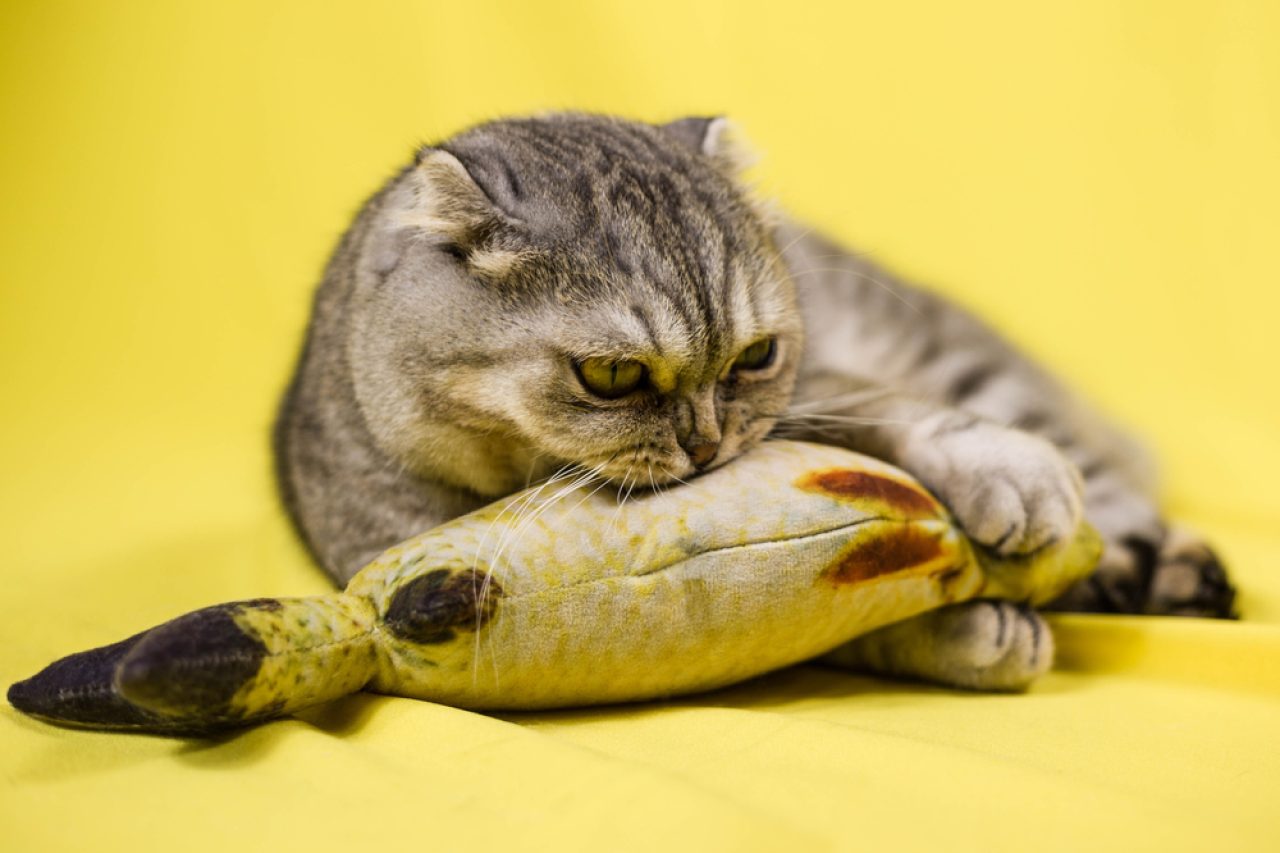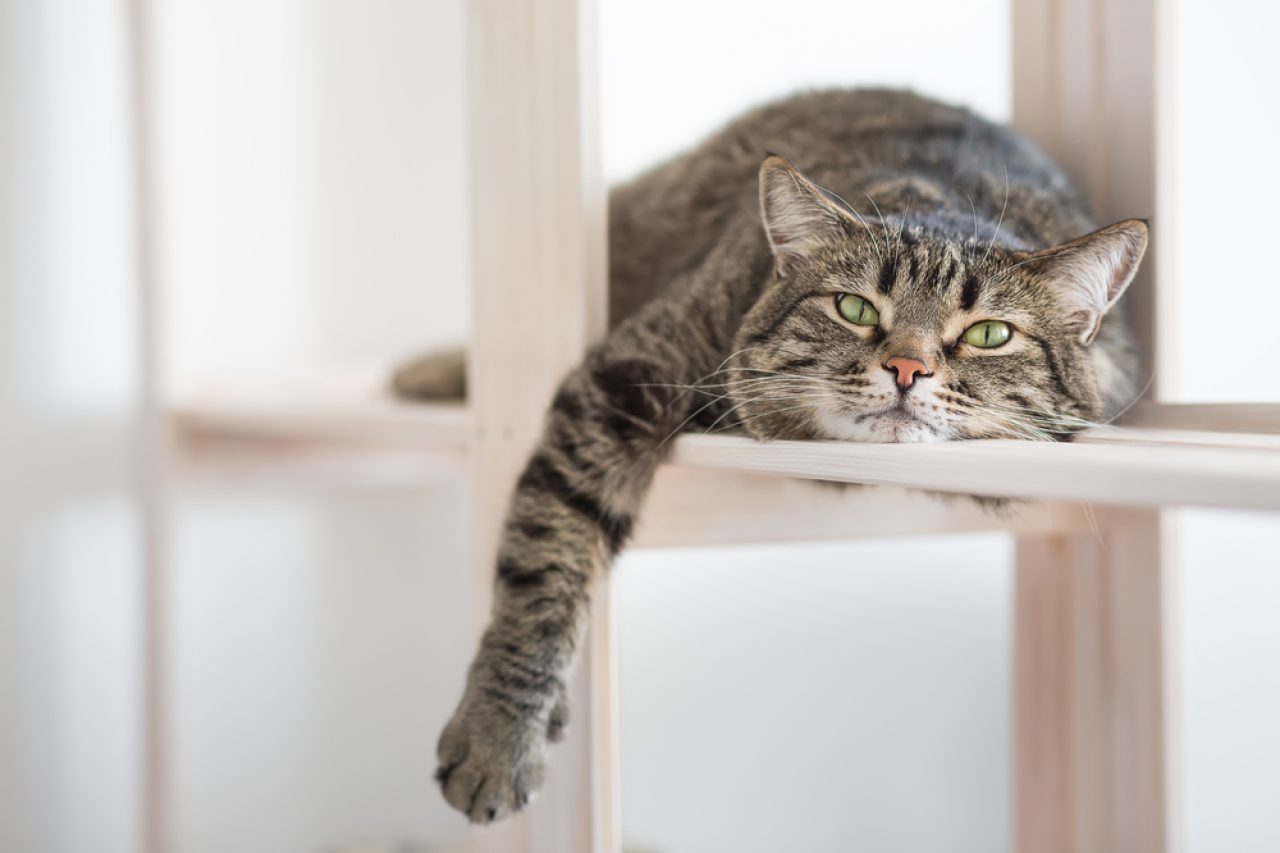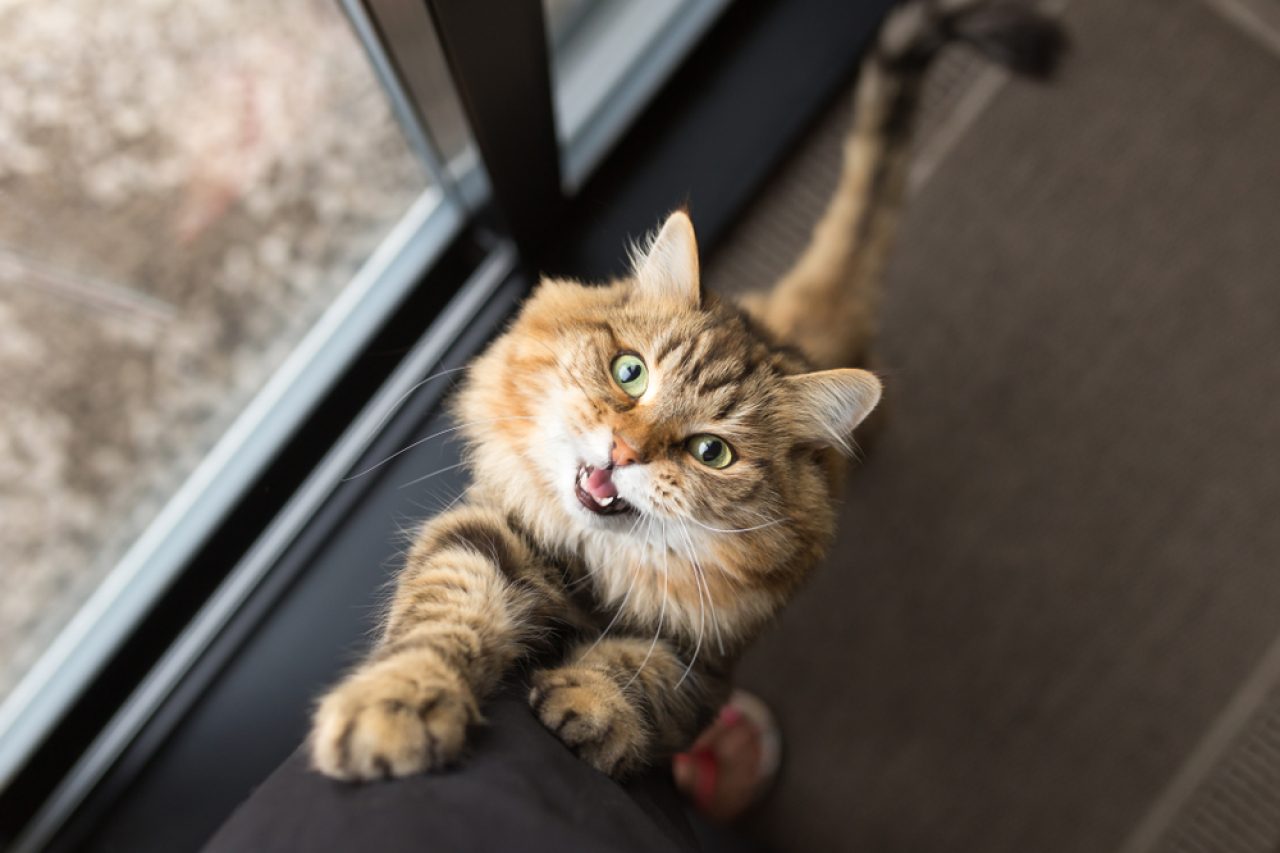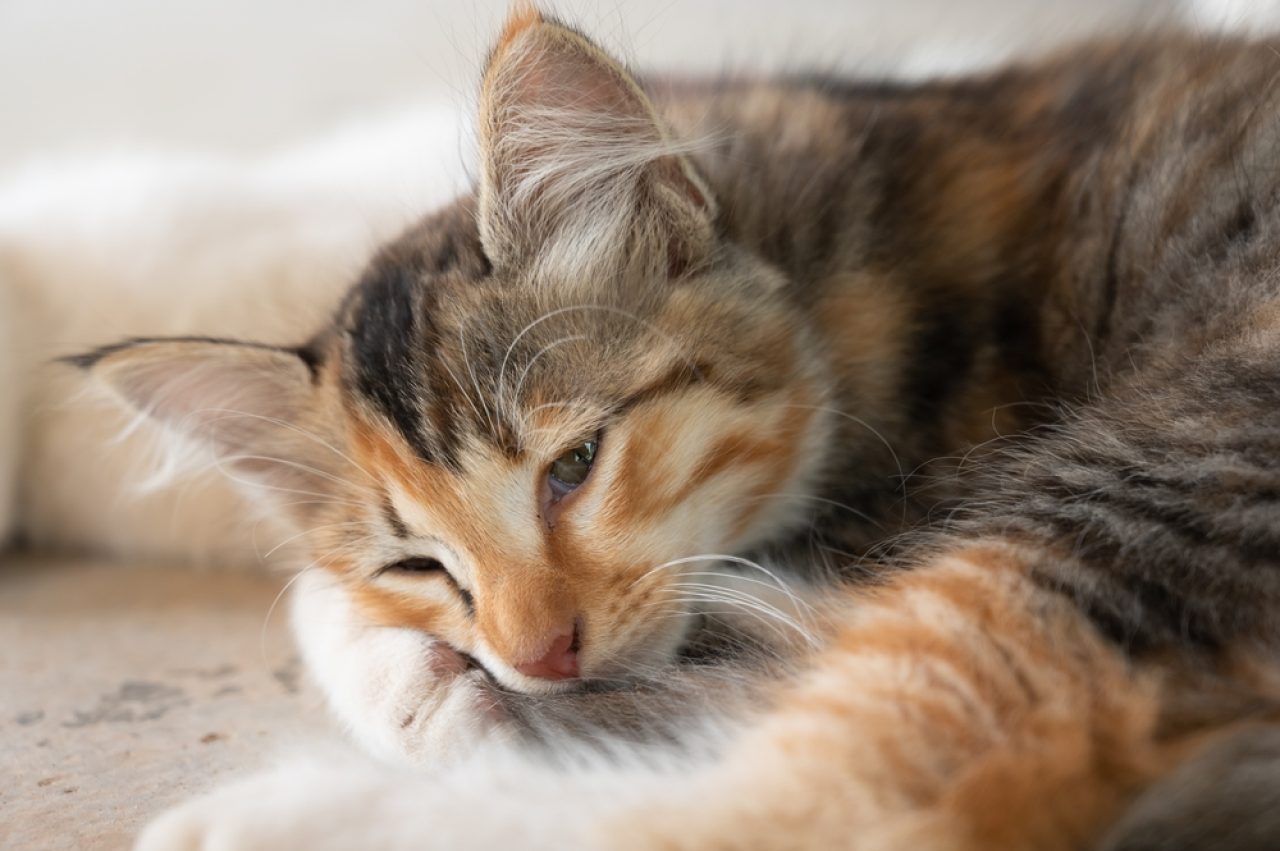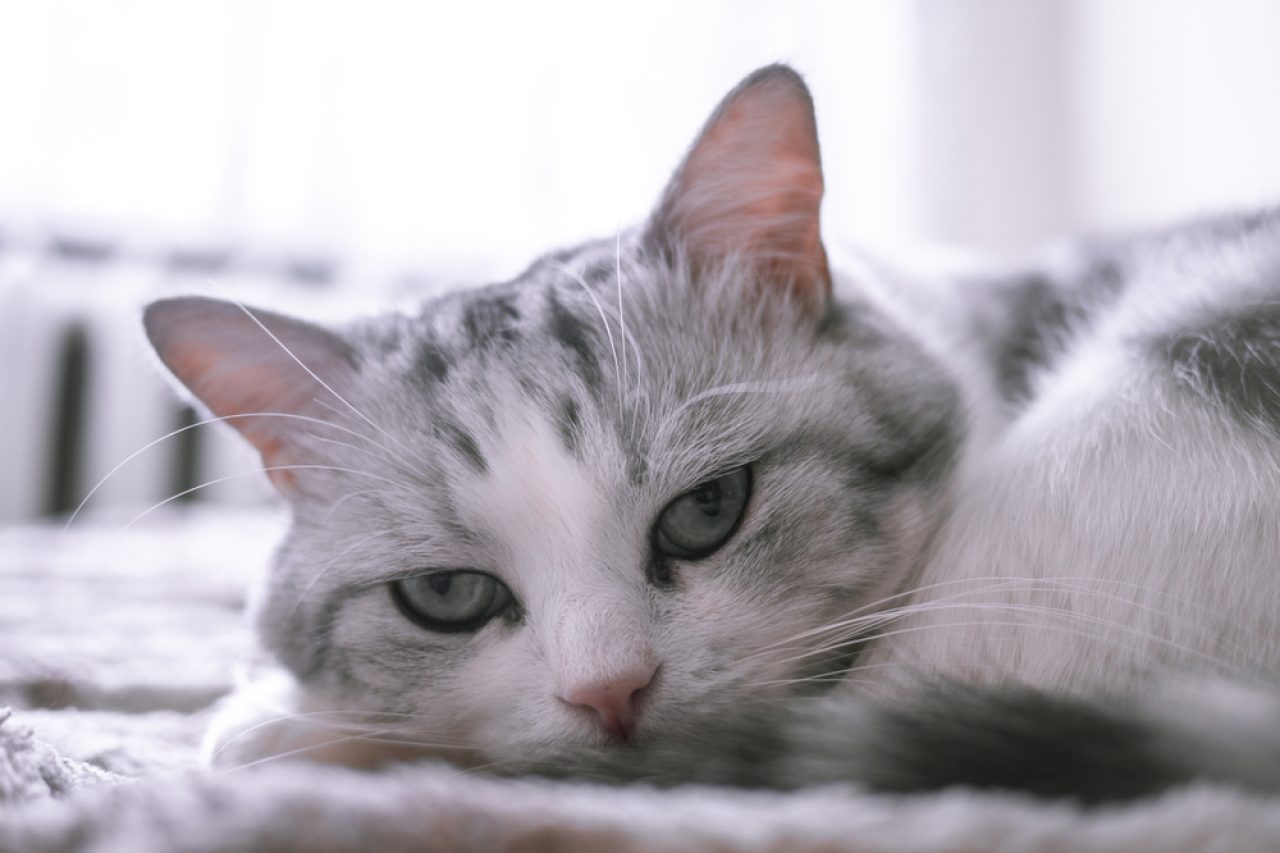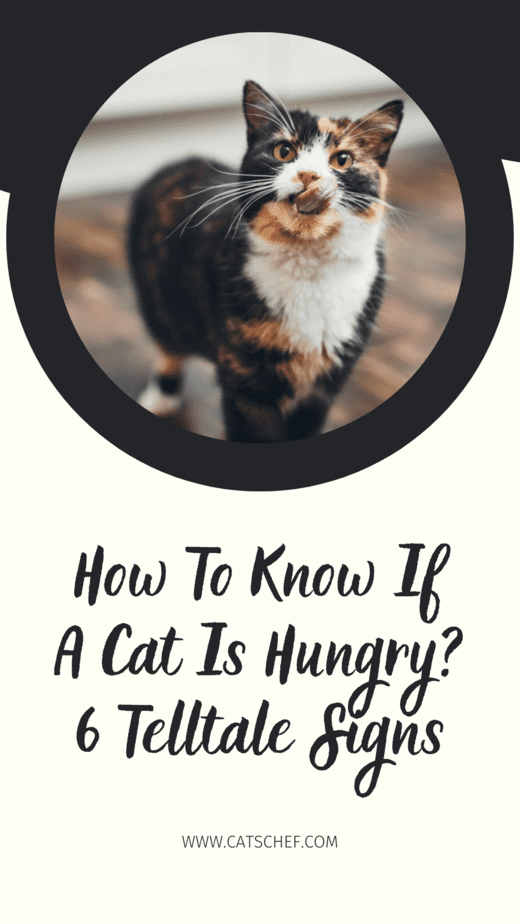📖 Table of Content:
Here we are, back with another age-old question. How to know if a cat is hungry? Is she really starving or is she just being dramatic?
I’m sure every person in the world has at least once been in a situation when he or she was face to face with a hungry cat. Oh boy, what an experience! All of a sudden, the whole world stops. No matter where you were heading, it felt like you are obliged to run to the first store and buy her some cat food.
At least that’s how it is for me. I simply cannot just walk by those big sad eyes which are desperately pleading for food. If I could, I would like to feed all the cats in the world. I’m sure I’m not the only one.
It’s somewhat easy to understand why stray cats are hungry since they usually have no one to feed them (except us crazy cat ladies). But how on earth is my 10-pound fluffy couch potato still hungry after the fifth meal of the day?
It’s the question I struggled with the most, to be honest. For the longest time, I couldn’t tell if my cat was really hungry or if she was just being greedy. I didn’t want her to feel famished, but I also didn’t want her to become overweight.
That tickled my curiosity and I started researching the topic of cats and hunger. Now that I’ve gathered all the information I possibly could, I’m more than willing to share it with you!
So, how to know if a cat is hungry or not? If that’s your concern, then continue reading to find out.
Does a cat meow when she’s hungry?
If a cat has regular meals at the same time each day, the chances that she’ll be meowing right before lunch are very high. Every cat loves routine and usually follows her usual schedule.
Along with meowing, a cat might also purr, follow her owner, rub against their legs, and paw at them trying to reach him. And she will do all of it with exceptional persistence.
However, some cats meow all the time and for no apparent reason. Also, some breeds are more vocal than others, like Siamese, and meowing for them is nothing out of the ordinary.
Just because the cat is accustomed to a certain schedule, like regular meal times, doesn’t mean that she’s actually hungry. She might be meowing for some other reasons, which don’t necessarily have to worry her owner.
So, how to know if a cat is hungry? Is meowing enough? Or is it not an accurate indicator of hunger after all? Let’s see what are some other signs of a hungry kitty, so we could be one hundred percent certain.
How to know if a cat is hungry?
Sometimes it’s hard to keep track of your cat’s meals, especially if someone else is also in charge of taking care of her. That person could feed her and forget to tell you; and because you’re uninformed, you could also give her food. Also, let’s be real – no kitty in this world would mind eating two lunches.
Some cats are able to self-regulate their food intake. Unfortunately, the majority of them lack the capacity to register that they aren’t actually hungry. They enjoy eating so much that they willingly overeat, not realizing that they’re only causing damage to their little bodies.
And how could they, really? They have us who should worry about their meal times and all they have to do is eat the food that’s given to them. But, how can you know when to feed your fluffball? How to know if a cat is hungry or not?
Here are the 6 most common signs of a hungry kitty that you should definitely take a look at.
1. She is too skinny
Well, this is an obvious one, but nevertheless deserves to be mentioned.
Let’s say you decided to feed the stray kitty that’s been lurking around your neighborhood. You noticed her body is oddly sunken, and you just want to help her live her best feline life.
In order for you to know that she is actually malnourished and not one of the breeds that are naturally slim and thin, like Singapuras for example, take a close look at her body. If she has a visible rib cage and protruding hip bones and spine, she’s undoubtedly hungry and hasn’t had a decent meal in a long time.
Alongside visible bones, her coat would probably be patchy, dull, and drab, due to the lack of nourishment.
But, if your indoor cat is rapidly losing weight and her bones are starting to notice, that is definitely a sign of some serious medical problems. In that case, you should take your cat to the vet.
2. She is eating the food too quickly
The easiest way how to know if a cat is hungry or not is by observing the way she eats the food.
Some cats naturally eat faster than others, especially if they live in a multi-cat home and have other feline competitors. Cats who eat competitively will likely guard their food bowl and growl while eating and chewing, making sure no one around dares to touch their food.
A truly hungry cat, however, will pay little to no attention to her surrounding. It will seem as though she’s not chewing at all, but just swallowing the food. If your cat behaves in this manner, then she’s most certainly starving.
3. She is regurgitating the food
A cat that eats fairly quickly without proper chewing, will most likely regurgitate the food she just ate.
There’s a little difference between regurgitating and vomiting that is still significant enough for us to mention it. When a cat regurgitates food, it always comes out undigested with passive motion and little to no gag reflex.
However, when a cat vomits, the fluid is very acidic with much more bile and small pieces of digested food. Vomiting is an active motion that involves a lot of effort and a visible and audible gag reflex.
So, if your cat regurgitates the food minutes after she ate it, that’s a sign that she has been very hungry and couldn’t eat it slowly, so it could properly digest.
What you can do in this case is to give your kitty smaller food portions, so she doesn’t swallow too much food at the same time. If she regurgitates again, you should consider changing the food you’re giving her since it obviously doesn’t sit right with her.
You can also consider adding non-edible obstacles in between those small portions. It will have to be something big enough for her not to eat, like ping-pong balls. She would maneuver those in order to reach the desired prize, and that will give her enough time to properly chew and digest the food.
4. She is caught eating non-edible items
“I saw her eating toilet paper, is she trying to tell me something?”
If you saw your cat eating things that are usually considered non-edible, that could be a sign that she’s hungry and in her little world it’s dinner o’clock! Maybe she doesn’t know her way around the kitchen, but we cannot blame her for trying to scramble a meal for herself.
However, eating non-edible things can be a sign of an eating disorder called pica syndrome. In cats, this condition manifests itself in the urge to eat things like certain fabrics, elastics, paper, dirt, and plastics.
Pica syndrome doesn’t have to be caused by malnutrition. It can also appear if kittens have been weaned too early, or due to boredom, stress, or anxiety. So, there’s no need to jump to the conclusion that your feline buddy developed pica.
You should keep an eye on your kitty to determine if she’s eating non-edible stuff occasionally, like when she could be hungry, or if she’s doing it more frequently.
5. She is lethargic
How to know if a cat is hungry or not? Well, you’ll have to observe the level of her energy.
If a cat is extremely hungry and malnourished, she will have less energy than usual and appear weak, almost sickly. Of course, some cats are born couch potatoes and naturally lazier than other cats, but even those lazy pants show obvious signs of utmost lethargy.
This is because food contains nutrients and nutrients fuel their little furry bodies with vital elements they need.
If they don’t receive those much-needed goodies, they will become frail and shaky, and have a hard time concentrating and being responsive. They can even sleep more than usual in order to preserve their energy.
So, if your cat is lazier than usual, there’s a possibility that she’s just hungry.
6. She is hangry
Oh, come on! Let’s be honest. We’re all being drama queens when we’re hungry. And our cats are allowed to act out as well.
A hungry cat will follow you around and try to get your attention in any way possible. She could be meowing extremely loudly, pawing at you, rubbing against you, or kneading.
She could also be extremely aware of sounds similar to those of her food, like the sound of opening a bag or can, or the sound of the food bowl being moved. She might also seem as though she’s agitated or annoyed.
This kind of behavior can be exhibited by a hungry cat, but also by one who is cunning enough to know how to get what she wants. So, make sure you keep track of her meal schedule, so she won’t fool you.
Is it possible that a cat has some medical issues?
We saw what are the signs of an actual hungry cat, but we also said that certain behaviors can be tied to a cat who just likes to manipulate her owner’s feelings in order to get what she wants (aka. food).
However, what if a cat seems as though she’s never satiated enough? What if she appears to be hungry even after you’ve just fed her? If this reminds you of your furball, then I hate to tell you, but maybe she’s suffering from some serious medical condition, and you should definitely take her to the vet.
Below are some common medical conditions in cats that often hide behind their overeating habits. Let me mention right away that if you do believe your cat suffers from any disease listed, it would be best to take your cat to the vet as soon as possible.
1. Diabetes mellitus
Diabetes mellitus is a medical condition when the body cannot properly produce or respond to the hormone insulin. The results of this condition are elevated levels of sugar glucose in the blood, which cats, as do humans, need for their energy.
There are two types of diabetes. In type I diabetes, glucose levels are high due to a decrease in insulin production. And in type II diabetes, which is what most cats suffer from, glucose levels are high because the cells fail to respond properly to insulin.
A diabetic cat usually has a great appetite but still manages to lose a lot of weight. Her energy levels decrease and she fails to be playful and energetic but appears weak and lethargic. Other symptoms of feline diabetes include increased thirst and urination.
2. Hyperthyroidism
Hyperthyroidism is a medical condition when the thyroid gland overproduces thyroid hormones. In most cases, hyperthyroidism is caused by a benign tumor of the thyroid gland. This is the most common endocrine disease in cats older than 8 years.
One of the symptoms of this condition is extreme weight loss despite the increased appetite. Other symptoms include vomiting, excessive urination, unkempt fur, hyperactivity, diarrhea, and others.
Hyperthyroidism often leads to other conditions like high blood pressure and heart disease.
3. Feline pancreatitis
The pancreas is a small organ located in the cat’s abdomen area, between the left kidney and the intestinal tract. It has two separate parts, endocrine and exocrine, which have different functions.
The endocrine part produces various hormones, including insulin which, as mentioned above, regulates blood sugar levels. The most common disorder of this part is diabetes mellitus.
And the exocrine part produces enzymes that aid in fat, protein, and carbohydrate digestion. Premature activation of these enzymes can cause damage and inflammation to the pancreas and surrounding tissues. This condition is known as pancreatitis.
When the pancreas is inflamed, the cat’s appetite drastically increases. Her coat can become dull and scruffy; she can start frequently vomiting, her stool can appear greasy, or she can have diarrhea.
4. Intestinal problems
There are a variety of different feline intestinal problems that can significantly damage their health and affect their appetite. Some of them are irritable bowel syndrome, colitis, inflammatory bowel disease, gastrointestinal ulcers, constipation, intestinal parasites, cancers of the digestive system, and others.
Each condition, as said, affects their appetite and can drastically increase, or decrease it. Other symptoms include bloating, poor fur condition, enlarged lymph nodes, and many more depending on the intestinal problem the cat suffers from.
Let’s talk about food portions for our feline friends
Since we have shown you how to know if a cat is hungry, we should actually discuss what are the recommended food portions for cats.
Kittens require more food since they are in the process of growing and developing. A newborn kitten should be fed 2 tablespoons of liquid cat formula per 4 ounces of body weight every 1 to 2 hours.
A 4 to 8 weeks old kitten should consume up to 60 calories per pound of body weight and should be fed every 6 to 8 hours. An 8 to 16 weeks old kitten should consume 250 to 280 calories per day, divided into 5 meals.
And a 4 to 6 months old kitten should consume 60 to 65 calories per pound of body weight, divided into 5 meals in the beginning, and later reduced to 2 or 3 meals per day.
When it comes to adult indoor cats, portions depend on many factors like breed, age, reproductive status, health condition, and others. However, an average adult indoor cat should consume 20 calories per pound of body weight and should be fed 2 to 3 times per day.
Senior cats require more calories since they can start to lose muscle mass. An average senior cat should consume 30 to 40 calories per pound of body weight, and the majority of those calories should come from animal-based proteins.
